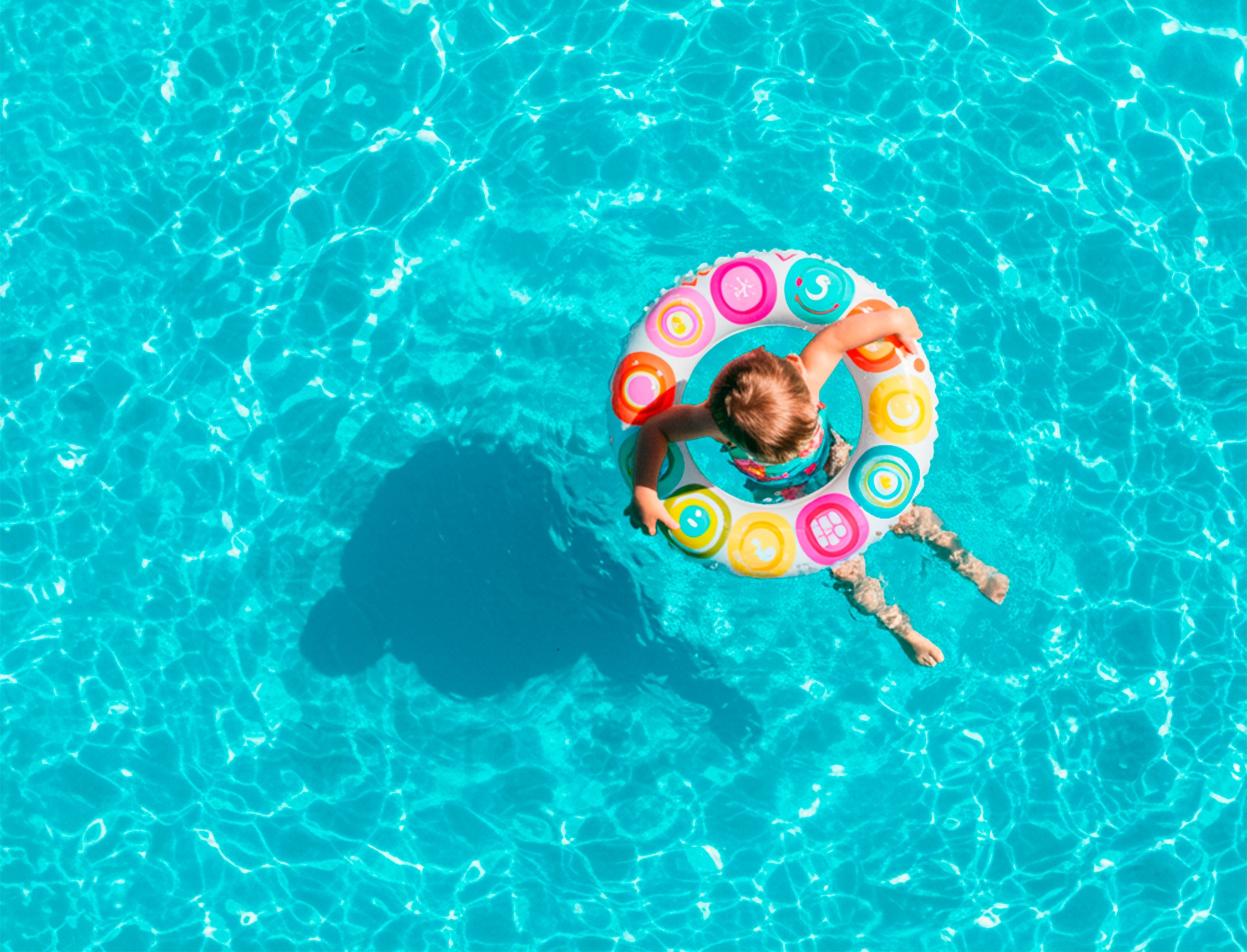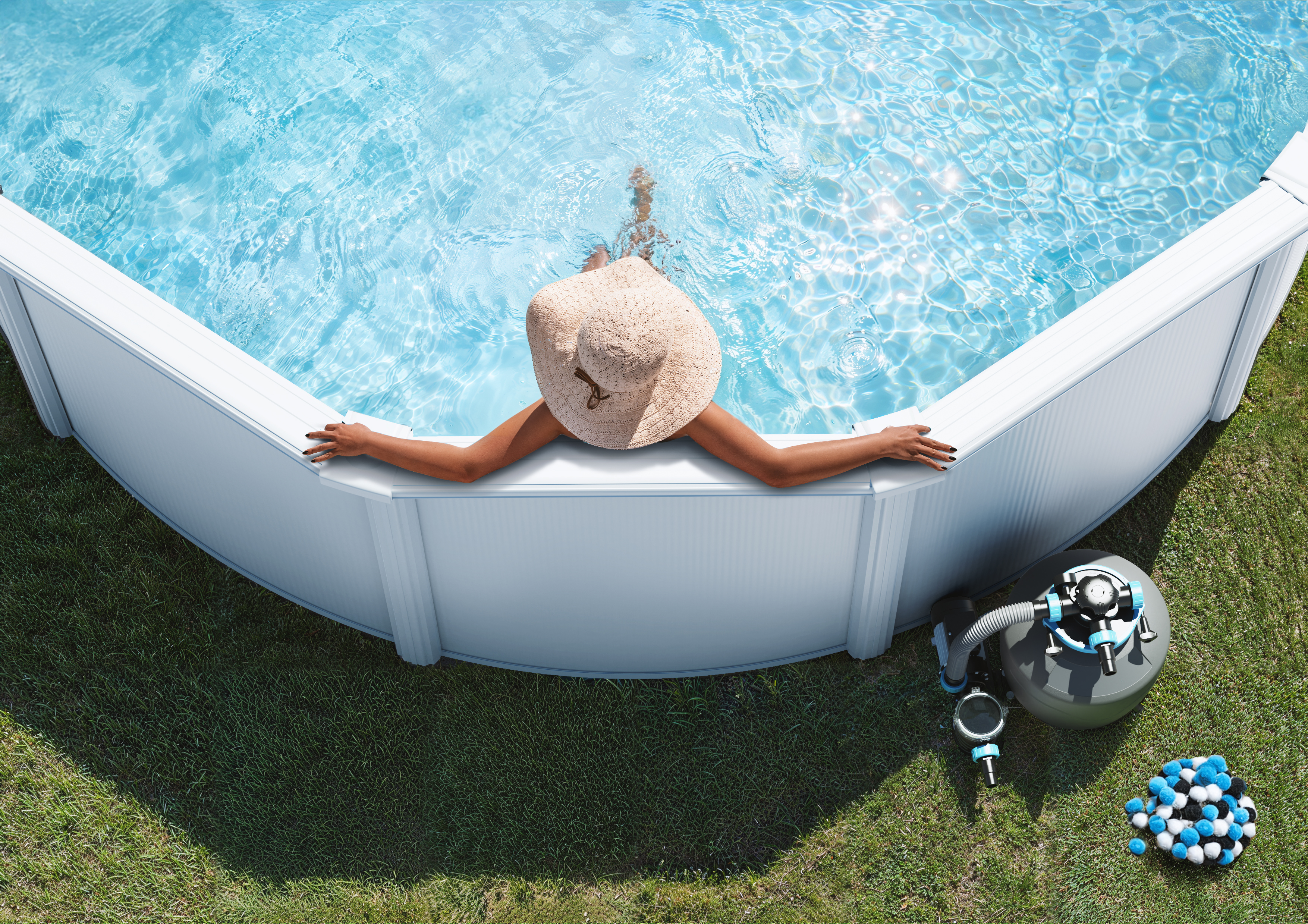Summer storms can have a direct impact on your pool water and components. Rain brings in dirt, leaves, insects, and other debris that contaminate the water and affect its chemical balance.
Additionally, rainwater dilutes treatment products, lowers chlorine levels, alters pH, and can lead to problems such as cloudy or green water and even algae growth.
In this article, we’ll explain how a storm can affect your pool and what steps you can take before and after to protect it and keep it in top condition.
 What happens to pool water during a storm?
What happens to pool water during a storm?
These are the most common effects:
• Dilution of chemicals
Rainwater reduces chlorine concentration, alters pH, and reduces treatment effectiveness.
• External contamination
Wind carries leaves, soil, insects, and pollen into the pool, accelerating water deterioration.
• Rising water level
Heavy rain can cause overflows and compromise the filtration system.
• Algae growth
Poorly balanced water, organic matter, and heat create the perfect environment for algae.
• Loss of clarity
Suspended particles from rain cloud the water and reduce visibility.
How to prepare your pool before a storm
Although many storms come suddenly, weather forecasts often allow you to prepare. Taking preventive steps can help you avoid damage and simplify maintenance.
- Clear the pool area
If a thunderstorm is approaching, safety comes first. Make sure no one is in or near the water.
- Cover the pool

Use a isothermic cover to protect the water from debris. This also helps reduce evaporation and preserve chemical levels.
- Disconnect electrical equipment
Turn off the filtration system and, if possible, disconnect the pump from power. Do the same for chlorinators, lighting, or timers to avoid electrical damage.
- Secure outdoor objects
Remove or secure chairs, tables, floaties, and toys to prevent them from being blown into the pool.
- Check water level and drainage
✔️ Slightly lower the water level if it’s near the edge to avoid overflow.
✔️ Make sure skimmers, drains, and gutters are clean and unobstructed.
After the storm: steps to recover your pool water
Once the storm has passed, act quickly to prevent further deterioration:
- Remove visible debris
Use a leaf net or pool cleaner to remove leaves, branches, and insects.
- Empty and clean the skimmer basket
It’s likely full of debris. Clean it to maintain water flow to the filter.
- Clean the filter
If clogged, perform a deep clean or backwash to restore efficiency.
- Check the water level
Adjust if it’s too high, which may affect skimmer performance.
- Test and balance chemical levels
Measure pH, chlorine, and alkalinity. They are likely out of balance.
- Shock chlorination
If the water is cloudy, green, or shows algae, apply a shock treatment.
- Add flocculant if necessary
If particles remain suspended, use a flocculant to group them for easier filtration.
- Filter continuously
Run the filtration system for 8 to 12 hours to circulate and clean the water.
Your pool, always ready
Storms are inevitable, but their impact on your pool can be drastically reduced if you know what to do before and after. With just a few care steps, your pool will stay clean, safe, and ready to enjoy all summer long.

Comments
Sus datos serán tratados por MANUFACTURAS GRE S.A. y por FLUIDRA S.A., con la finalidad de gestionar sus comentarios y dudas en el blog y, en su caso, ponernos en contacto con Usted para solucionarlas. Puede consultar más información sobre el tratamiento de sus datos y cómo ejercer sus derechos, tal y como se describe en la Política de Privacidad.